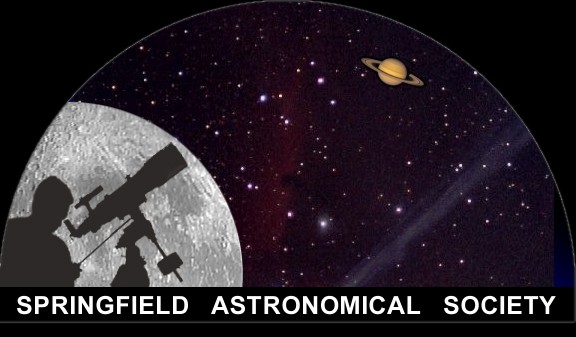
Jim Aldrich
3/15/2012 1:11:54 PM
The Owl Planetary Nebula (M-97) is located in Ursa Major & is about 2600ly distant. The central star exploded around 6000 years ago producing a small nebula 2.8 arc min in diameter.
I aquired the image through Red, Green, & Blue filters and processed the data in CCDStack & Photoshop to produce a color version. A total of 30-10min RGB exposures were used to process this image. I disgarded 2.5 hrs of Luminance data that did not improve the quality of the picture.
Journey's End Observatory
14" Meade LX200ACF
CGE-Pro Mount
SBIG STL-11000M Camera
MOAG & AO-L Guided
| 
Patrick Holland
2/26/2012 10:16:28 PM
I tried to get 6 hours of subs on M81 this time around but the clouds came in after only 2 short hours. This image was taken 2-24-2012. This was taken on the Orion Sirius mount with the Explore Scientific 102mm APO (F7). Camera used was the Atik 450C w/ Orion Deluxe OAG with the Orion SSAG. 12 - 10 minute exposures. Pre-processing was done in Maxim DL, Post Processing was done in Photoshop CS3.
| 
Patrick Holland
2/26/2012 10:07:22 PM
A less than successful attempt to get the ever elusive Thor's Helmet nebula (NGC 2359). I underestimated this one for 4 hours of subs, this is a very dim nebula. This was shot on 2-19-2012. Equipment used was the Meade LX200 10" scope (for glorified mount). Riding atop the the Meade was the Explore Scientific 80mm APO which was used for this image. Camera used was the Atik 450C (5 megapixel), Orion deluxe OAG with the Orion Starshoot Auto Guider. 4 hours of 5 minute subs were used. The initial processing was done in Maxim DL, post processing was completed in Photoshop CS3. This image clearly needs more integration time.
|

Patrick Holland
2/26/2012 9:58:42 PM
As winter gives way to galaxy season, here is an unfinished monkey head (NGC 2174) shot I took on January 14 2012. Equipment used was the Orion Sirius Mount, Explore Scientific 102mm APO, Starlight Xpress SXVR-H18 camera, SX filter wheel w/OAG and Lodestar Autoguider. This was 2.5 hours of Hydrogen Alpha (Baader 7nm) subs.
| 
Jim Aldrich
1/21/2012 11:54:46 PM
The progenitor star that created the Crab Nebula is now a rotating neutron star (pulsar) that can be seen in the visual light spectrum. The energy it produces causes shock waves in the surrounding gas. I extracted a luminance image from my previous data that shows the pulsar & shockwaves at it's 10 o'clock position. I inverted the image to better expose the details. It's not pretty, but I found it interesting.
Journey's End Observatory
14" Meade LX200ACF
CGE-Pro Mount
SBIG STL-11000M Camera
MOAG & AO-L Guided
| 
Jim Aldrich
1/19/2012 12:01:46 AM
Here is a shot of the Crab Nebula that I took over the past week when sky conditions were reasonable. This object is actually the remains of a supernova that detonated on July 4, 1054 as recorded by Chinese astronomers. It is 6300ly from us and is still expanding from the original explosion. The LRGB image is composed of about 8 hours of total exposures.
Journey's End Observatory
14" Meade LX200ACF
CGE-Pro Mount
SBIG STL-11000M Camera
MOAG & AO-L Guided
|

Patrick Holland
12/26/2011 12:27:07 PM
And in color...Thanks to Mark Sibole for color data.
| 
Patrick Holland
12/24/2011 5:15:38 PM
NGC2244, also known as the Rosette Nebula. Got a brief chance to get some data early this morning. Captured 2.5 hours of HA data on this one. Used CGEM mount, Explore Scientific 120mm APO scope, Starlight Xpress SXVR-H18 Camera w/Filterwheel/OAG combo with the SX Lodestar guiding. 15-10 minute subs.
| 
Jim Aldrich
12/20/2011 12:25:08 PM
My first attempt to measure the transit of an exoplanet was on a night with poor seeing and a full moon. Wasp-50b is a hot jupiter orbiting a 11.55 mag star. If you use your imagination you can see a depth of around 20 milimags & transit time of 108 min. which agrees with other observations. The blue line represents a comparison star that was fluctuating at +/- 10 milimags due to poor seeing conditions.
Journey's End Observatory
14" Meade LX200ACF
CGE-Pro Mount
SBIG STL-11000M Camera
MOAG & AO-L Guided
|

Jim Aldrich
12/20/2011 11:50:11 AM
M82 is a starburst galaxy located in the constellation Ursa Major about 12 mly away. The 4 bright areas visible in the core are active starburst clusters. This LRGB image is composed of about 8 hours of total exposer time.
Journey's End Observatory
14" Meade LX200ACF
CGE-Pro Mount
SBIG STL-11000M Camera
MOAG & AO-L Guided
|
